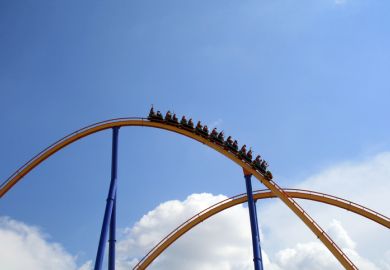The possibility of travel through time has long been a staple of imaginative fiction. Of course, it's easy enough to travel forwards in time: everyone does it, whether they like it or not, at one second per second. It was only when Einstein formulated his theory of special relativity that physicists understood that time didn't flow absolutely; by moving rapidly through space a traveller could return having aged less than those who stayed behind.
The real challenge is to travel backwards in time, into the past. Einstein's theory of general relativity taught us that space and time are curved - and presented the possibility that they could be curved so dramatically that one could indeed visit one's former self. Is such a flagrant violation of our everyday notions of causality compatible with the laws of physics? Embarrassingly, we don't yet know the answer. David Toomey's book takes us through some of the fascinating research of modern physicists into the nature of time travel.
Despite its association with science fiction, the possibility of time travel has captured the imagination of some of the deepest thinkers in physics, from Kurt Gödel to Stephen Hawking. Toomey tells the interesting and true story of how Kip Thorne, who reinvigorated the study of time machines in the 1980s, first became drawn to the subject - by an inquiry from Carl Sagan, who was trying his hand at writing a novel ( Contact ) and wanted to make sure all the science was kept respectable.
Sagan wanted to have his heroine take a shortcut through space by means of a black hole. Thorne suggested that wasn't a feasible notion but that a similar feat could be accomplished using a wormhole - a tube of space connecting two otherwise widely separated regions. In Einstein's universe, time and space are closely related, and Thorne soon realised that wormholes could be used to travel in time, even into the past.
But can you build a wormhole and keep it open? That kind of question demands the equation-heavy analysis that separates physics from science fiction. General relativity describes spacetime as dynamical and responsive to energy and momentum, but can it be stretched in the right way to build a tunnel connecting different points? Arguments about the physical realisation of wormholes and associated time machines serve as a focal point for much of Toomey's book.
The New Time Travelers , meant for the lay reader, begins with a well- written introduction to relativity. Toomey does a very good job at blending cutting-edge science with entertaining and insightful stories about scientists as human beings.
One of the unavoidable aspects of choosing time travel as one's research topic is that the subject seems as fanciful and unserious to most physicists as it does to everyone else; we run across a number of examples in which highly credentialled scientists find themselves justifying their work to their colleagues, insisting that it really is a legitimate scientific question. Ultimately, even Thorne was told by the National Science Foundation that it didn't want its grant money spent on research into time machines.
In the meat of the book, Toomey delves into some of the detailed questions that arise in the study of time travel in general relativity, including the nature of cause and effect (or "the initial value problem", in physics jargon) and the behaviour of quantum fields in these exotic spacetime backgrounds. Although he does an admirable job in translating recondite research into ordinary language, these sections seem less compelling. Rather than truly absorbing the material and abstracting the essence, Toomey seems to be dutifully marching through a list of research papers, trying to represent each one faithfully. I suspect that many readers will have trouble following the crucial threads of argument through these chapters.
Nevertheless, this book offers an engaging look at modern physics at the far-flung theoretical frontiers. Nobody is suggesting that time machines will be practical in our lifetimes; still, physicists feel a compulsion to understand the very limits of what is possible and to separate the conceivable from the inconceivable. The question of whether we can travel through time is something we should be able to figure out, and this book is a good introduction.
Sean Carroll is a senior research associate in physics, California Institute of Technology.
The New Time Travelers: A Journey to the Frontiers of Physics
Author - David Toomey
Publisher - W. W. Norton & Co
Pages - 320
Price - £15.99
ISBN - 9780393060133
Register to continue
Why register?
- Registration is free and only takes a moment
- Once registered, you can read 3 articles a month
- Sign up for our newsletter
Subscribe
Or subscribe for unlimited access to:
- Unlimited access to news, views, insights & reviews
- Digital editions
- Digital access to THE’s university and college rankings analysis
Already registered or a current subscriber? Login


